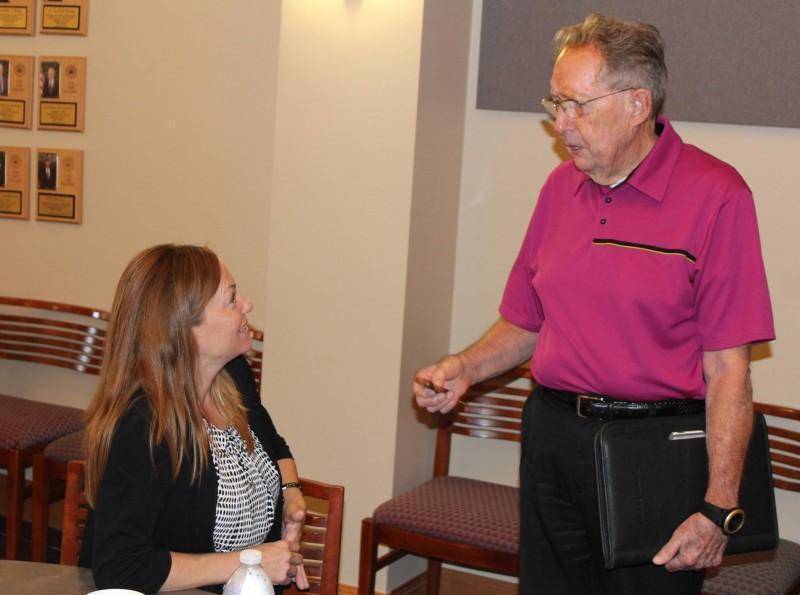BEAR Press Release
Stacked credentials, or the idea of allowing certifications, certificates and degrees to add up to advanced training and employment opportunities, was the gist of a presentation given by Dr. Gary Straquadine, the Vice Chancellor of Career and Technical Education at USU Eastern, during the Business Expansion and Retention general membership meeting on Sept. 17.
Straquadine pointed out during the meeting that mid-skill jobs often require less than an associate or bachelors degree.
“Stackable credentials allow individuals to have different levels of education and to grow on what they have already attained,” he said.
He also gave some parameters for what is required for stackable credentials to work for both educational institutions and for employers.
First, stackable credentials must be industry recognized or accepted by the businesses that would be looking at potential and current employees.
Second, they would need to be portable. In other words, they should function in such a way that they can be moved from educational institution to other educational institutions for credit toward further training or a degree.
Third, stackable credentials should be able to be linked to one another for growth purposes.
Straquadine said that industries where these work well are in such areas as computer technology, auto and diesel mechanics, truck driving, the military, and some fields in medicine and ministry.
While not all colleges in the state will not work or will only partially work with credential stacking, the Utah State University system career and technical education programs are using this all over Utah now. The program began in 2011 when the Utah State Higher Education system set standards and made policy changes so that the stackable system could function. The Utah College of Applied Technology (UCAT) got involved as well and there are many 900 hour programs that are now stackable. These can lead to an AAS degree. The total integration of this has just happened in the last year.
As far as schools in the state that recognize this credential program, Weber State does quite well and SUU is leaning toward it. Straquadine said that UVU was not there yet and the University of Utah has not embraced the concept at all.
Straquadine said there are five steps to obtaining stackable credentials.
1. High school allows a broad experience helping students to determine the fields they are interested in.
2. UCAT allows for certifications in many of their programs (900 hours).
3. Certificates of proficiency can be earned for many fields.
4. More hours and classes above the certificates can attain an AAS degree.
5. These AAS degrees can then be forwarded to be used toward a bachelors degree.
These kinds of programs are good for lifelong learners and for those that must interrupt educational programs for various reasons. He also said the program does not have to be linear in development.
The audience asked about associate degree attainment and if work experience can be applied toward certificates or degrees. Straquadine said associate degrees will depend on the field. He also stated that USU does not recognize prior work experience toward educational degrees. He said that kind of a program has had mixed results in other colleges across the nation.
Amy Peters, Career and Technical Education Adviser at the college, then spoke and talked about businesses taking on interns. She said the program was to provide professional experience for students so they can evaluate if they really want to go into a field or not.
Russell Goodrich, a professor of business at USU Eastern, interjected that in order for an internship to work right, some objectives need to be set for students. Employers also need to know the skills and qualifications the student intern may have before they begin work. He said that many employers want to see if there are pertinent courses that have been taken toward working at their company or organization.
Peters said all a business needs to provide is a willingness to mentor a student. No money is expected but a stipend is often used by the employer to reward interns who work for them.

